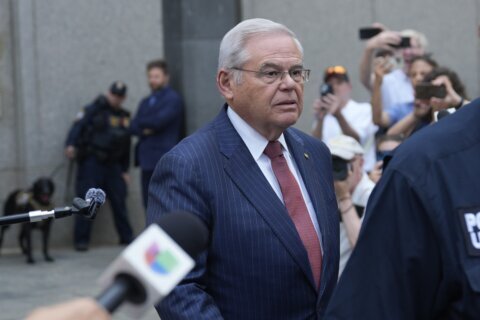The economics of a changing global climate have created new risks in recent years, but also new opportunities.
In the near term, both traditional fossil fuel stocks as well as clean energy companies tend to be driven by the most recent pricing trends — as evidenced by the fact that a host of oil and gas stocks including Exxon Mobil Corp. (ticker: XOM) have outperformed the S&P 500 year to date in 2024. But it’s undeniable that as we move toward a global goal of net-zero carbon emissions by 2050, wind, solar and other clean energy sources will continue to grow as a share of the power generation marketplace.
[Sign up for stock news with our Invested newsletter.]
While it’s admittedly hard to pick what companies will be the big winners more than two decades from now, clean energy ETFs provide a diversified way to play this long-term megatrend in a single holding. The following seven picks are the leading investment options for those looking for clean energy ETFs, based on their established size with at least $150 million in assets under management, as well as a direct connection to renewable power.
| Clean Energy ETF | Assets Under Management | Expense Ratio |
| iShares Global Clean Energy ETF (ICLN) | $2.2 billion | 0.41% |
| First Trust NASDAQ Clean Edge Smart Grid Infrastructure Index Fund (GRID) | $1 billion | 0.57% |
| Invesco Solar ETF (TAN) | $977 million | 0.67% |
| First Trust Nasdaq Clean Edge Green Energy Index Fund (QCLN) | $692 million | 0.59% |
| Invesco WilderHill Clean Energy ETF (PBW) | $302 million | 0.66% |
| ALPS Clean Energy ETF (ACES) | $199 million | 0.55% |
| SPDR Kensho Clean Power ETF (CNRG) | $190 million | 0.55% |
iShares Global Clean Energy ETF (ICLN)
Assets under management: $2.2 billion Expense ratio: 0.41%, or $41 annually on every $10,000 invested
A staple of many alternative energy investors, ICLN is the largest and most well-established option among clean energy ETFs on Wall Street. Born in 2008, it has a lengthy track record and the sponsorship of exchange-traded funds behemoth iShares as part of its pedigree, in addition to one of the largest hoards of assets under management in the space. ICLN takes a diversified, global approach to clean energy, with 100 stocks across the clean energy landscape including solar and wind power firms as well as utilities that operate significant green power facilities. It has about 40% of its portfolio in the U.S., with Denmark as the No. 2 region of influence at 10% of assets and Spain at No. 3 with just under 9%.
First Trust Nasdaq Clean Edge Smart Grid Infrastructure Index Fund (GRID)
Assets under management: $1 billion Expense ratio: 0.57%
Rather than focusing on solar, wind or clean energy power generation, GRID zeroes in on companies that are building out “smart grid” infrastructure. This is a critical part of the clean energy transition, as the intermittent nature of wind and solar requires upgraded ways to transmit and store power from renewable sources. This clean energy ETF holds companies including electric components giant ABB Ltd. (OTC: ABBNY) as well as solar energy inverter specialist Enphase Energy Inc. (ENPH)
[READ: 7 Top Women Investors]
Invesco Solar ETF (TAN)
Assets under management: $977 million Expense ratio: 0.67%
The solar ETF with the clever ticker; investors looking to make a dedicated play on this dedicated segment of the alternative power biz may prefer TAN to other clean energy ETFs. While it is indeed much more focused, with only about 40 solar stocks that all tend to move in lockstep based on the same big-picture trends for the industry, the fund is well-capitalized with around $1 billion in assets. Its holdings are split about 60/40 between the U.S. and international markets, with China as the second-largest jurisdiction at about 15% of the portfolio at present. Solar stocks can be notoriously volatile from month to month, but are definitely a part of the clean energy future — and perhaps worth considering as a part of a long-term investment portfolio.
First Trust NASDAQ Clean Edge Green Energy Index Fund (QCLN)
Assets under management: $692 million Expense ratio: 0.59%
Though not as large as some of the other clean energy ETFs on this list, QCLN is a good option for those looking for a broad fund that touches all parts of the movement for a net-zero global economy. Some of the roughly 60 components of this First Trust fund are direct green technology companies, such as First Solar Inc. (FSLR), and others are more tangential like electric vehicle manufacturer Tesla Inc. (TSLA). It is admittedly much broader than some other clean energy ETFs, but that may be attractive to investors looking to cast a wider net.
Invesco WilderHill Clean Energy ETF (PBW)
Assets under management: $302 million Expense ratio: 0.66%
This Invesco clean energy ETF has a few familiar holdings represented in the other funds so far, but generally PBW takes a more aggressive approach by concentrating in smaller, emerging stocks. Its 70 or so holdings have an average market cap of about $1.5 billion, including names like energy storage leader Fluence Energy Inc. (FLNC) and Standard Lithium Ltd. (SLI). This ETF is rebalanced quarterly to adapt to the rapidly evolving landscape, but keep in mind that a portfolio of generally smaller companies means more volatility than some of its peers — and in an emerging field like alternative energy, that may be risky. Still, an investment in PBW provides access to potential future leaders across a range of clean energy technologies and applications via small up-and-coming stocks, which makes the potential reward worth it for some investors.
ALPS Clean Energy ETF (ACES)
Assets under management: $199 million Expense ratio: 0.55%
ACES is smaller than other clean energy ETFs on this list as measured by assets as well as by total holdings with a mere 40 total holdings. It is broad in its ambit, however, and comprises a diverse set of U.S. and Canadian companies involved in all parts of the clean energy sector, including renewables and clean technology. This allows space for firms like green utility specialist Brookfield Renewable Partners LP (BEP) as well as EV upstart Rivian Automotive Inc. (RIVN). The fund has had its ups and downs over the last year or two, but particularly in the last several weeks its outperformance seems to validate this unique approach to clean energy investing.
SPDR Kensho Clean Power ETF (CNRG)
Assets under management: $190 million Expense ratio: 0.55%
The smallest of the clean energy ETFs in this group as measured by assets, this SPDR fund is another bespoke offering tied to one of the most diverse lists of components in the alternative energy space. A list of about 50 total holdings includes solar leader First Solar, but also less intuitive stocks like large-cap utility Constellation Energy Corp. (CEG) and even generator manufacturer Cummins Inc. (CMI). If you’re looking for a play on wind, solar and other alternative energy players, then CNRG may be a bit too indirect for you. But if you want to cast a wide net, it’s a way to invest in clean energy ETFs without getting into aggressive or international startups.
More from U.S. News
5 Top Income Investments for the Second Half of 2024
7 High-Yield Covered Call ETFs Income Investors Will Love
The Indian Stock Market: How to Invest in the World’s 5th-Largest Economy
7 Clean Energy ETFs to Buy Now originally appeared on usnews.com
Update 06/07/24: This story was previously published at an earlier date and has been updated with new information.







